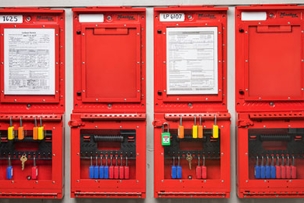Both the staffing agency and the host employer are equally accountable for keeping temporary employees from harm, advising them of hazards and providing proper training, according to the Occupational Safety and Health Administration (OSHA). Ensuring that all employees, regardless of their permanence, are aware of job hazards and safety best practices protects employees and keeps employers and staffing agencies in compliance with OSHA standards.
Because of this joint responsibility, clear and decisive communication between manufacturers and staffing agencies is key to keeping temporary workers safe. OSHA recommends explicitly laying out each party’s role in the employment contract, so there is no question as to who is responsible for which aspects of employee safety.
Training for a Safer Workplace
Employers have the same duty to a temporary worker’s safety as they do to a permanent employee’s. According to OSHA (29 CFR 1910), this means ensuring a safe work environment by limiting hazards and training employees in safety standards to mitigate risks. At manufacturing facilities, this might include proper handling of toxic substances, safely operating machinery and equipment, and avoiding falls.
Every temporary employee should go through the same training as a full-time, permanent employee, whether it’s online learning, in-person classes or on-the-job training. Additionally, since temporary workers are placed wherever they are most needed and might fill multiple roles during their tenure, employers should offer relevant training that covers the hazards and risks of each new role to ensure the employee is continually prepared to work safely.
Read more: Tackling the Manufacturing Skills Gap: 5 Skills Your Company Will Need Soon
This can amount to a lot of training. In an industry where workers are already hard to find, allocating time for training—as well as hiring knowledgeable educators or pulling permanent workers from a job to provide guidance—can be a challenge for employers. That’s where online learning management systems can help. Employers can designate training plans, and workers can take courses, watch videos and assess their learning through exams. Online training kits can take the guesswork out of regulatory and safety readiness through video on-demand and interactive courses.
An Open Conversation About Safety
Even well-trained employees can run into situations that they don’t feel prepared to handle, such as operating new equipment or performing a new task. Some employees might simply feel as though their safety training is out of date. For these reasons, OSHA recommends that employers seek input from employees on workplace safety.
“Workers can identify missing safety procedures, make recommendations for changes and help ensure a safe workplace,” OSHA says. “When workers have a voice in the workplace and input about how training is developed, training programs are more accurately focused on specific workplace hazards.”
Employers should encourage all workers, including temporary employees, to speak up when they see a gap in training or an opportunity for safer practices. Together, employers and employees can take steps toward a safer workplace for all.
How have you helped temporary employees adapt to their work environment safely? Share your tips in the comments below.



Talk to Us!
Leave a reply
Your email address will not be published. Required fields are marked *